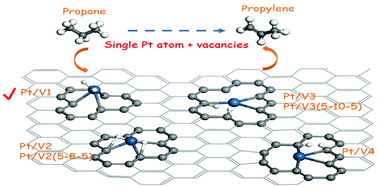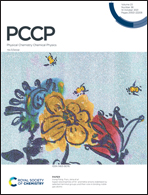Tailoring the catalytic performance of single platinum anchored on graphene by vacancy engineering for propane dehydrogenation: a theoretical study†
Abstract
Propane dehydrogenation (PDH) is an effective approach to produce propylene. Downsizing the Pt species to single atom catalysts (SACs) has become a hotspot, owing to the maximum utilization and excellent catalytic behavior. However, the agglomeration of SACs is the decisive limitation for high temperature PDH. Herein, single Pt atoms were anchored on graphene with different types of vacancies, and their catalytic performances on PDH were explored based on density functional theory (DFT). As the vacancy size increased, the catalytic activity decreased. It was because the combined site of the detached H atom in propane would transfer from the Pt atom to the C atom around vacancies, thus increasing the migration distance and lowering the activity. However, with the increase of vacancy size, the selectivity to propylene was improved, owing to the enhanced repulsion between C atoms in graphene and propylene. Therefore, instead of stabilizing the single atom, vacancies in carbon materials can also tailor the catalytic performance by geometric disturbance. This fundamental work opens up the possibility for purposeful SAC design in PDH.



 Please wait while we load your content...
Please wait while we load your content...